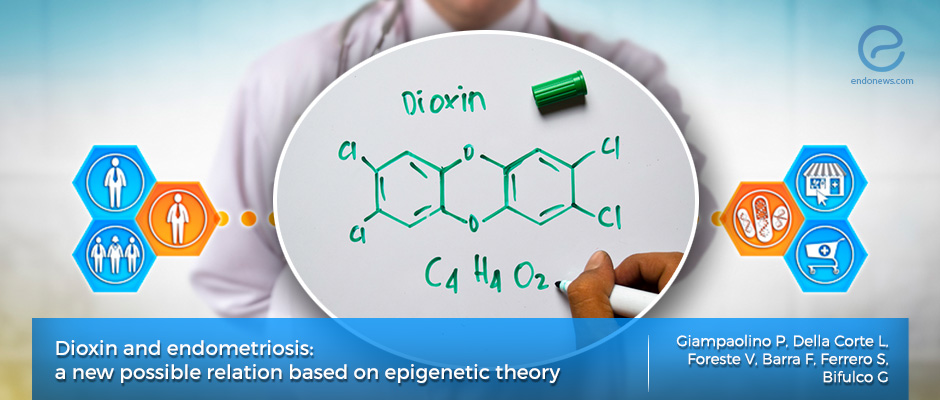An important environmental contaminant dioxin has links to the pathogenesis of endometriosis
Feb 17, 2020
Endometriosis seem to be epigenetically triggered by an environmental contaminant
Key Points
Highlights:
- Evidence piling up on serious genetic contributions to endometriosis susceptibility where genetic factors provide about half of the variation in endometriosis risk.
- Pioneering work on demonstrating a relation between an environmental contaminant and endometriosis was obtained with the chronic dietary.
- Research on dioxin pointed to a potential role in endometriosis development.
Importance:
- Environmental contamination with dioxin is an increasing health problem, especially in places where uncontrolled burning and dismantling and recycling of electronic products exist.
- The primary exposure of people to dioxin is particularly by eating animal food.
What's done here:
- This is a narrative review, conducted following the search questions: “Does it really exist a relation between Dioxin and Endometriosis? Could it be explained through an epigenetic approach?”.
- The search string was applied to the electronic literature databases MEDLINE and WEB of SCIENCE.
Lay Summary
Giampaolinoa and associates from the University of Genoa, Italy published a review on environmental contaminant dioxin and its possible epigenetic role related to endometriosis development in "Gynecological Endocrinology". The authors made a narrative review, with the results of their search questions: “Does it really exist a relation between Dioxin and Endometriosis? Could it be explained through an epigenetic approach?”. The search string was applied to the electronic literature databases MEDLINE and WEB of SCIENCE.
There is increasing evidence of serious genetic contributions to endometriosis susceptibility where genetic factors provide about half of the variation in endometriosis risk. It has been proposed that the abnormal expression of genes for endometriosis could be provoked by several epigenetic modifications. These include DNA methylation, histone modifications, non-coding RNAs, chromatin structure, and RNA methylations.
The first observation demonstrating a relation between an environmental contaminant and endometriosis was obtained with the chronic dietary exposure of a primate colony to dioxin (2,3,7,8-tetrachlorodibenzo-pdioxin, TCDD). In the subsequent research publications, dioxin seems to have a potential role in the development of endometriosis.
Environmental exposure to dioxin is an increasing current problem, especially in countries where uncontrolled burning and dismantling and recycling of electronic products take place.
The primary exposure of people to dioxin is by eating animal food, in particular. Many in vitro and animal studies point to a possible relationship between exposure to dioxin and developing endometriosis. The most frequent epigenetic change studies in endometriosis-related to Dioxin exposure include DNA methylation, histone modification as well as RNA transcriptional changes.
The relationship between dioxin exposure and endometriosis has not been fully revealed yet. The authors conclude that there is a mission for the future in understanding how environmental signals are translated into epigenetic changes and if the epigenetics effects could be reversible or could be transmitted to the germ-line and thus to the next generation.
Research Source: https://www.ncbi.nlm.nih.gov/pubmed/31805795
dioxin epigenetic environmental contaminant

